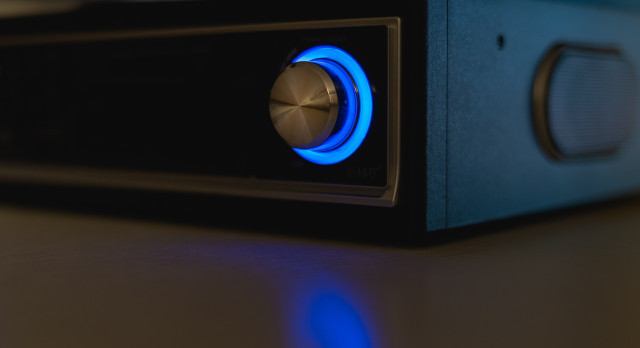Vampire power has nothing to do with mythical bloodsucking creatures of the night, but it does create serious real-world problems that are a ‘drain’ on resources – and your wallet.
Vampire Power Explained

Vampire power refers to electrical appliances that leech energy even when they are switched off. Energy professionals actually call this ‘leaking electricity’ because the devices are using energy without performing their principal use.
According to the Department of Energy, so-called vampire appliances and electronics account for 10% of the energy used in an average home. When you include all homes in the U.S., that totals about 52 billion kWh per year or about 26 average-sized power plants. This is a monumental waste of power and resources that we can all work towards reducing just by re-evaluating our own energy usage at home.
But how do you identify energy vampires in the home? As a rule of thumb, any item or appliance that has an external power supply, remote control, continuous display (including an LED) such as a clock or DVD player, or an item that charges batteries, are major offenders when it comes to vampire power.
Furthermore, you may want to assess your home’s burglar alarms, garage door openers, telephone answering machines and cordless phones as these also play a role in energy loss through vampire power. When purchasing an upgrade of any of these appliances or devices in the home, it is worth looking at their hidden costs in terms of potential energy waste and researching energy-efficient brands that with help in reducing the overall energy waste of your household.
Find more ways to save on hefty utility bills with these simple strategies: Conserving Energy: 10 Ways to Save Electricity
The Problem With Vampire Power



The connectivity of modern technology is one reason why our devices leak energy. Even when the TV is off, for example, it’s still ready to receive a signal from the remote to power on at any time. Your DVR is always ‘lying dormant’ in standby mode until it’s time to record the next show or run regular updates. Readily available power means your devices can switch back on rapidly when you decide to use them again. However, this handy feature comes at a cost regarding your monthly and yearly electricity costs.
Main offenders include common household appliances such as old VCRs, answering machines, alarms, smoke detectors, cordless phones, fax machines, and rechargeable electric toothbrushes.
But the biggest vampire power offenders that you really need to keep an eye on are:
- Desktop computers and displays
- Faxes and printers
- Satellite and cable boxes
- Stereos
- TVs
- Microwaves
- Garage door openers
- Video game consoles
How To Reduce Vampire Power



Use Energy Star Certified Appliances
While it might not be realistic (or environmentally friendly) to rush out and purchase all new appliances, you can shop smart when the time does come for an upgrade. To find the most sustainable option, look for appliances that have the best Energy Star rating.
Often, companies that participate in labeling programs also display expected power costs for the appliance. Energy Star labels highlight those products that meet the electric efficiency qualifications set out by the EPA. These products are deemed more energy-efficient than their counterparts, as well as complying with quality and performance standards. You may pay more up-front, but savings in electricity costs over the life of the product will usually make up the difference.
Unplug Devices
The most basic approach to your standby power issue is to identify the offending appliances and unplug them entirely. While you won’t want to unplug every appliance in your home each day, identifying the ones you use less frequently can help zero in on those pesky vampire power problems. For example, if you only use the microwave once or twice a week, unplugging it after each use may provide a cost-cutting benefit.
Since most of us own at least one smartphone or tablet, constantly charging these devices adds to our energy costs. Instead of leaving devices to charge overnight or for extra hours during the day, once they are fully charged, unplug their charger at the same time.
When any home appliance is truly ‘off’ you will also reduce the risk of fire or danger from electric shock. Leaking electricity also creates heat, which will inevitably increase a home’s air conditioning load. Also worth noting is that vampire over time can actually degrade the performance of sophisticated electronic equipment such as PCs and laptops.
Plug into Power Strips
Rather than manually unplug each device or flip a light switch, you can press one button to cut off power to a bank of appliances using power strips. Electric power strips are easily accessible and can shut off power to assorted devices at the same time.
If you own a desktop computer, you may already use a surge protector power strip to protect your device’s components. Using power strips elsewhere in your home can help consolidate cords and make saving electricity even simpler.
Read more:
- 5 Reasons Why You Should Turn Off Your Phone
- Recommended Thermostat Settings for Winter: How to Save on Heating
- 10 Green Tips That Will Make Your Everyday Life More Sustainable
Do you like this post?






